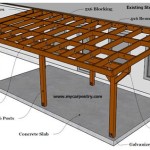How to Build a Paver Patio on a Sloped Yard
Building a patio on a sloped yard presents a unique set of challenges. The uneven surface requires careful planning and execution to ensure a stable, functional, and aesthetically pleasing outdoor space. However, with the right approach and materials, you can transform a sloping area into a beautiful and usable patio. This article will guide you through the process of constructing a paver patio on a sloped yard, covering key steps from preparation to finishing touches.
1. Planning and Preparation
Before diving into construction, thorough planning is essential. Here are key considerations:
Site Survey and Design: Conduct a detailed site survey to determine the slope, soil type, existing vegetation, and any utilities that may need to be considered. Use this information to design a patio layout that complements the existing landscape. Consider the desired size and shape, as well as the placement of seating, dining areas, and pathways.
Material Selection: Choose pavers that suit the style and aesthetic of your home. Consider factors like durability, slip resistance, color, and pattern. Also, select appropriate edging materials to create a defined border for the patio.
Drainage: Proper drainage is crucial for a sloped patio. Plan the drainage system to ensure water flows away from the house and doesn't puddle on the surface. You can achieve this through a slight slope in the patio itself, a trench filled with gravel, or a combination of both.
Permits and Inspections: Check with your local building department about any necessary permits or inspections for patio construction.
2. Excavation and Grading
Once you have a clear plan, it's time to begin excavation and grading:
Excavation: Remove existing vegetation and topsoil to the desired depth and width of your patio. The depth should be sufficient to accommodate the base layer, the paver sand, and the pavers themselves.
Grading: Grading is crucial for ensuring proper drainage and a level surface for the pavers. If your patio has a significant slope, create a series of steps or terraces. Use a level and a rake to achieve the desired slope.
Compaction: Compact the excavated soil and remove any loose or unstable materials. This will help to prevent settling and ensure a stable foundation for the patio.
3. Base Layer and Sand Bed
A well-constructed base layer is essential for a long-lasting patio:
Base Layer: Place a layer of crushed stone or gravel as the base layer for your patio. This provides stability and helps to drain excess water. The thickness of the base layer should be determined based on the soil conditions and local building codes. Typically, it ranges from 4 to 6 inches.
Compaction: Compact the base layer thoroughly using a plate compactor or a hand tamper. This compacts the stone and creates a solid foundation.
Sand Bed: Spread a layer of paver sand over the compacted base layer. The thickness of the sand bed should be slightly less than the thickness of the pavers, allowing for appropriate leveling and packing.
4. Paver Installation
Installing the pavers involves careful placement and joint filling:
Laying the Pavers: Begin laying the pavers in the desired pattern, working from the lowest point of the slope upward. Use a rubber mallet to gently tap the pavers into place and ensure a level surface.
Joint Filling: Once the pavers are installed, fill the gaps between the pavers with polymeric sand. This sand is designed to compact and harden, creating a strong and durable joint that prevents weeds and erosion.
Edging: Install edging materials around the perimeter of the patio. This helps to contain the pavers and create a clean, finished look.
5. Finishing Touches
Once the pavers are installed, you can add the finishing touches to create a beautiful and inviting patio space:
Grouting: If you are using traditional pavers, use a grout or mortar to fill the joints between the pavers to prevent weed growth and enhance the appearance.
Sealing: Apply a sealer to the pavers. This helps to protect the pavers from stains, weathering, and fading.
Landscaping: Enhance the surrounding landscape with plants, trees, and hardscaping features to create a cohesive and inviting outdoor space.
Building a paver patio on a sloped yard requires careful planning, meticulous execution, and attention to detail. By carefully considering the steps outlined above, you can create a beautiful and functional outdoor space that enhances your property and provides enjoyment for years to come.

How To Improve A Sloped Backyard With Grading And Clay Pavers
Building Paver Patio On Slope Pics Lawn Care Forum

Paver Patio Slope Diy Pavers Building A

Diy Patio Installation How To Build A Paver Scrappy Geek
Questions On Sloping A Raised Patio Lawn Care Forum
.jpg?strip=all)
How To Install Patio Pavers Lv

How Much Should A Patio Slope Away From House

Back Yard Patio On Sloped Terrain Small Garden Backyard

How To Build A Paver Patio Budget Dumpster

Block Patio Slope Question Doityourself Com Community Forums
Related Posts








